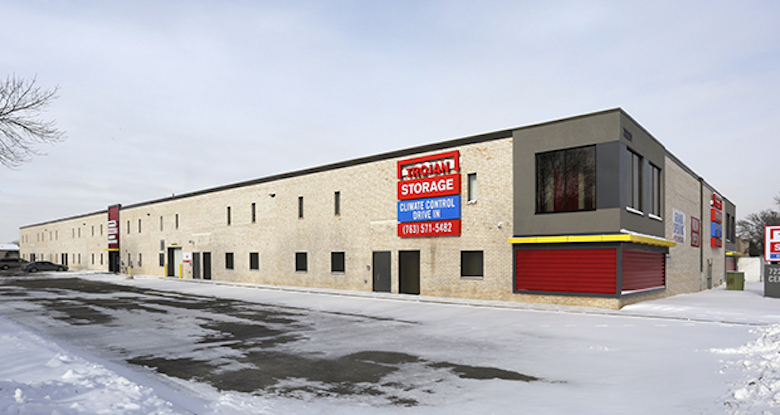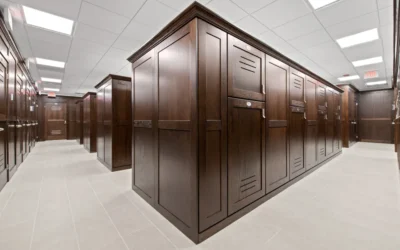The pipeline of for-sale portfolios is starting to look a little picked over at this later stage of the real estate cycle.
“Obviously, we have seen some of the bigger portfolios trade,” said Ryan Clark, a senior vice president at Skyview Advisors, a national self-storage brokerage firm.
Some of the notable mega-deals that occurred in 2016 included Sovran Self Storage’s acquisition of LifeStorage for $1.3 billion. Florida-based iStorage also sold its 66-facility portfolio to National Storage Affiliates for $630 million.
More recently, Harrison Street Real Estate Capital bought a 15-property portfolio from Trojan Self Storage. The purchase price was not disclosed, but some news reports said the price likely topped $100 million. The portfolio spans 1.4 million square feet and approximately 10,900 units.
The CBRE brokerage team representing the seller described the deal as a “rare opportunity” to acquire a high-quality portfolio in strong markets across multiple states – namely California, Arizona, Colorado and Minnesota.
Such sizable portfolio deals are rare given the volume of deals that have already traded.
Over the peak
In addition, commercial real estate sales transactions overall have slowed in the past year and self-storage properties are no exception. Real Capital Analytics reported $779.2 million in self-storage sales in Q1 2017, which was down about 26% compared to the $1.05 billion reported during Q1 2016.
“That being said, we’re still continuing to see a number of smaller portfolios, whether that is a two-property package or a 10-property package coming out and being well-received by the market,” said Clark.
Skyview Advisors is listing or closing about one portfolio deal per month. On the sell side, owners are recognizing that it is still a good time to put portfolios on the market for sale.
“I do think there are a lot of smaller regional owners that do realize that, from a valuation perspective, it is still a strong period to sell,” said Clark.

One of 15 facilities recently purchased by Harrison Street in a portfolio deal, this one is located in Fridley, MN.
Restocking the pipeline
There is a steady stream of for-sale portfolio coming from a variety of sources, such as funds that are maturing, institutional investors that are cleaning up portfolios or developers that are building and selling facilities.
For example, Marcus & Millichap’s Sean Delaney and Michael Mele recently represented the seller in a two-property sale in Wisconsin for $17 million. U-Haul bought both facilities, which were built within the last three years and operated under as The Vault.
Some long-time independent operators continue to look for exits, adds Joel Deis, a regional manager, Seattle and national director, National Director, National Self Storage Group at Marcus & Millichap.
On the buy side, investors still have a big appetite to acquire self-storage properties. However, the yield expectations are changing a little bit, notes Deis. REITs, for example, are starting to back off a little bit and are not being as aggressive on pricing, which is resulting in fewer offers for some of the bigger portfolios.
That pullback in REIT buying could present opportunities for small to mid-size investors. There also is a lot of capital in the market for lower priced single assets and portfolios and the smaller market is still on fire, he says.
Bridging the pricing gap
One of the big challenges in the market is diverging expectations between buyer and seller. Owners are having a little bit of trouble lowering pricing expectations when they are still seeing occupancies at 90 percent or better and regular rent bumps.
“There are a lot of folks who would like to sell that are coming around to the idea that we are no longer at the peak of the market,” said Clark.
A year to 18 months ago there would have been six bidders all within a very tight range close to the top end of the ask price. Now those six offers are spreading out more and there is a bigger spread between offers.
“You may only have one, two or three in the seller’s strike zone, which makes deal making more challenging to get done,” said Clark.
It also makes deals that go under contract more precarious when there isn’t a volume of offers on the top end that can keep the competitive pressure on the deal, he adds.
Late phases
Self-storage investment sales are in a mature phase of the market cycle, and have likely tipped past the peak in terms of pricing in many metros. Rising interest rates could bring lower cash-on-cash returns and put upward pressure on cap rates. The flip side of that is that interest rates remain low by historical standards, and strong operating fundamentals could help support continued strong pricing.
During the last cycle, the market hit its peak and then the underlying fundamentals of the assets started to erode. What is different in this cycle is that the underlying fundamentals are still strong, rents are still rising and capital is still very cheap by historical standards, says Deis.
“So, it is hard to say exactly what inning you’re in, because you don’t have these undertows pulling you down,” Deis said.








